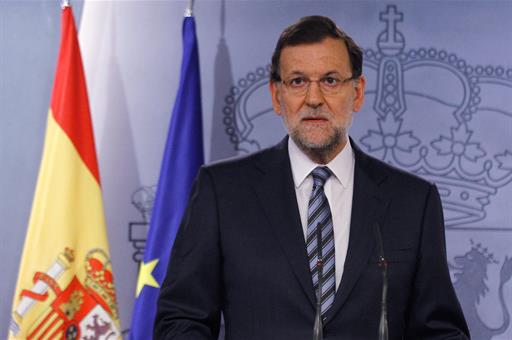Madrid
At Moncloa Palace on Wednesday, 4 March, the President of the Government of Spain, Mariano Rajoy, is due to receive the President of the Republic of France, François Hollande, the Prime Minister of the Portuguese Republic, Pedro Passos Coelho, and the President of the European Commission, Jean-Claude Juncker, accompanied by the Commissioner for Climate Action and Energy, Miguel Arias Cañete, and the President of the European Investment Bank (EIB), Werner Hoyer, for a meeting on energy interconnections convened by the President of the Government at the highest political level.
The main goal is to make progress on the commitment shared by France, Spain and Portugal with the European Union institutions on energy interconnections and the financing thereof through European funds, especially the Juncker Investment Plan.
These interconnections constitute a key part of the Energy Union, which seeks the effective establishment of an internal energy market and a common energy policy in the European Union; two highly important sectors for companies as they will allow them to access a resource that is key to their competitiveness at better and more foreseeable costs.
However, they are also essential factors for both environmental issues - the development of renewable energies is impossible in their absence - and the security of our continent - they facilitate the diversification of sources and reduce the dependency of supply on unstable regions of the world. Finally, they are equally essential to our citizens because they will enable energy to reach homes at a lower cost, thereby generating an increase in well-being.
Joint declaration
The European Council meeting in October 2014 reaffirmed interconnections as a fundamental part of the Energy and Climate Change package and re-launched the minimum electricity interconnection target of 10% of installed power capacity, which will be achieved by no later than 2020. This target was recognised for the first time at the Barcelona European Council meeting in 2002 during the third Spanish Presidency of the Council of the European Union. Following the inauguration of the High-Voltage Line between Santa Llogaia and Baixas on Friday 20 February, the electricity interconnection capacity between Spain and France will double to 2.8%. However, this is still far removed from the target set by the European Council.
The summit will approve a joint declaration to be signed by the Heads of State and Government of Spain, France and Portugal and the President of the European Commission. The declaration reaffirms the commitment to energy interconnections from those taking part in the meeting and details a series of measures that will be adopted by both the governments of the participating countries and by the European Commission. These measures include the adopting of a common strategy for the transmission systems operators of Spain, Portugal and France, and the creation of a new high-level regional group for south-west Europe that, with participation by the European Commission, would oversee progress on the corresponding projects and offer technical consultancy services.
The Juncker Investment Plan provides a window of opportunity for the public-private financing of energy interconnection infrastructures. Public investment banks (the ICO [Official Credit Institute] in Spain) are expected to contribute 1.5 billion euros towards the funding that may be allocated to specific investment projects.
Energy interconnection projects fall perfectly in line with the Juncker Plan as they have been wholly considered to be an EU priority. They are projects that contribute towards the creation of a single energy market, economic growth, job creation and competitiveness, just as they will contribute towards achieving EU targets on renewable energies and greenhouse gas reduction. Moreover, they are public-private partnership projects with a knock-on effect that generate a return on investment.
Target: 10% interconnection with the rest of Europe
Following the inauguration by the President of the Government and the Prime Minister of France of the very high-voltage line between Baixas (Girona) and Santa Llogaia (France) on 20 February, and the meeting held in Madrid on 27 February between Mariano Rajoy and the Vice-President of the European Commission, Jyrki Katainen (responsible for designing and implementing the Juncker Plan), to discuss, among other issues, the inclusion of energy interconnection projects in the funding from this plan, the summit on 4 March will finalise the commitment from Spain, France and Portugal, with support from the European Commission and the EIB, and ensure that the target of reaching 10% interconnection with the rest of Europe within the coming years can be realised.
Based on the statement issued by the European Commission on 25 February, the next European Council meeting on 19 and 20 March, due to focus on the Energy Union project, among other things, will provide another excellent opportunity to make progress towards this target. The declaration, which will be signed in Madrid tomorrow, will constitute a fine example of collaboration between Member States in this direction. This will represent a step away from many years of declarations and very slow progress on this objective towards a plan with specific projects and European financing.
In short, the summit on 4 March offers an excellent opportunity to make progress towards identifying said common projects and obtaining support from the European institutions for the financing thereof, and for Spain to cease being an "energy island". Once again, Spain is heading up a political initiative of the highest order in the European Union that will help strengthen our economies, create jobs and boost energy security throughout the EU.





